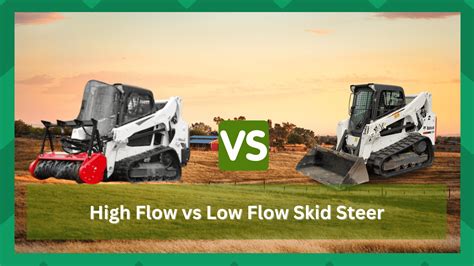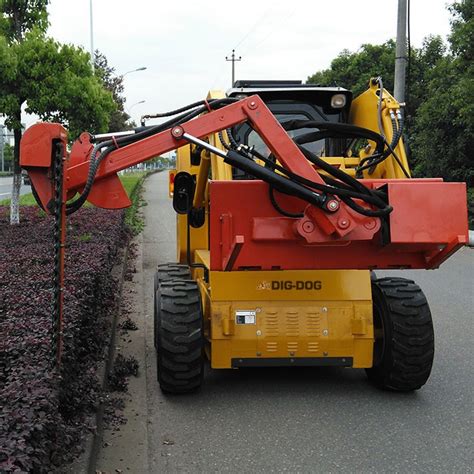skid steer hydraulic gallons per minute comparison What is the Difference Between High Flow and Low Flow on a Skid Steer? The main difference between high flow and low flow hydraulics on a skid steer is the amount of hydraulic power they deliver.Low flow systems generally produce around 20 gallons per minute (GPM), while high flow systems can provide 34.9 GPM or more. This increased flow rate in . Contact Mini Digger Hire Bristol today. With our reliable equipment and commitment to customer satisfaction, we’re your trusted partner in excavation. Book your mini digger now and experience the difference.
0 · skid steer vs high flow
1 · skid steer hydraulics flow rate
2 · skid steer hydraulics
3 · skid steer hydraulic flow
4 · high flow skid steer requirements
5 · high flow skid steer performance
6 · high flow skid steer manual
7 · high flow hydraulic skid steer
Please note the actual model supplied may vary from the images, description and .
Learn the differences between high-flow and standard-flow skid steers and how . What is the Difference Between High Flow and Low Flow on a Skid Steer? The main difference between high flow and low flow hydraulics on a skid steer is the amount of hydraulic power they deliver.Low flow systems generally produce around 20 gallons per minute (GPM), while high flow systems can provide 34.9 GPM or more. This increased flow rate in .
Learn the differences between high-flow and standard-flow skid steers and how to calculate hydraulic horsepower. Find out which attachments need high flow and how to switch modes on your machine. High-flow and standard-flow terminology refers to how much hydraulic fluid can move through the hoses on the machine. This rate is commonly called gallons-per-minute (gpm). Standard-flow skid steers have between 17 to 25 gpm while high-flow skid steers have hydraulic flow rates anywhere from 30 to 45 gpm. Although flow rates differ by manufacturer and skid steer model, the flow rate of a standard-flow system ranges from 17 to 24 gallons per minute (gpm). Standard-flow auxiliary hydraulics are included on all skid steers from the factory and operate on the same pressure that the machine’s main hydraulics operate on, which is approximately 3,000 .
Standard flow is 23 gallons per minute and 3,500 psi. High Flow is 36.6 gpm, also at 3,500 psi. The Super Flow options bumps flow to 42 gpm and pressure to 4,061 psi. “It’s the only loader. Learn why some skid steer attachments, such as drum mulchers, swing arm stump grinders, and severe duty cold planers, need high flow hydraulics. Find out how to calculate hydraulic horsepower and compare different models of high flow attachments.Flow Rate Finder. Auxiliary Hydraulic Flow Rates. Knowing the auxiliary flow rating of your machine is critical in order to properly size any powered attachments. If you flow too much oil to a motor that can't handle it, then you risk major damage to the hydraulic motor.
The standard-flow option ranges from 17.6 gallons per minute to 23.6 gallons per minute depending on loader model, with 3,500 psi, and works great for attachments like combination buckets, augers, hydraulic breakers, trenchers .Learn how to choose the right skid steer loader for your needs based on lift capacity, dump height, lift path, and other specifications. Compare different models, sizes, costs, and attachments of skid steers. Learn about the top skid steer brands, models, and features to help you choose the right one for your project. Compare horsepower, capacity, weight, and attachments of ASV, Bobcat, Caterpillar, CASE, Gehl, John Deere, JCB, and Kubota skid steers.
What is the Difference Between High Flow and Low Flow on a Skid Steer? The main difference between high flow and low flow hydraulics on a skid steer is the amount of hydraulic power they deliver.Low flow systems generally produce around 20 gallons per minute (GPM), while high flow systems can provide 34.9 GPM or more. This increased flow rate in .

skid steer vs high flow
Learn the differences between high-flow and standard-flow skid steers and how to calculate hydraulic horsepower. Find out which attachments need high flow and how to switch modes on your machine. High-flow and standard-flow terminology refers to how much hydraulic fluid can move through the hoses on the machine. This rate is commonly called gallons-per-minute (gpm). Standard-flow skid steers have between 17 to 25 gpm while high-flow skid steers have hydraulic flow rates anywhere from 30 to 45 gpm. Although flow rates differ by manufacturer and skid steer model, the flow rate of a standard-flow system ranges from 17 to 24 gallons per minute (gpm). Standard-flow auxiliary hydraulics are included on all skid steers from the factory and operate on the same pressure that the machine’s main hydraulics operate on, which is approximately 3,000 . Standard flow is 23 gallons per minute and 3,500 psi. High Flow is 36.6 gpm, also at 3,500 psi. The Super Flow options bumps flow to 42 gpm and pressure to 4,061 psi. “It’s the only loader.
Learn why some skid steer attachments, such as drum mulchers, swing arm stump grinders, and severe duty cold planers, need high flow hydraulics. Find out how to calculate hydraulic horsepower and compare different models of high flow attachments.Flow Rate Finder. Auxiliary Hydraulic Flow Rates. Knowing the auxiliary flow rating of your machine is critical in order to properly size any powered attachments. If you flow too much oil to a motor that can't handle it, then you risk major damage to the hydraulic motor.
The standard-flow option ranges from 17.6 gallons per minute to 23.6 gallons per minute depending on loader model, with 3,500 psi, and works great for attachments like combination buckets, augers, hydraulic breakers, trenchers .
Learn how to choose the right skid steer loader for your needs based on lift capacity, dump height, lift path, and other specifications. Compare different models, sizes, costs, and attachments of skid steers.

skid steer hydraulics flow rate
1.5 Ton Mini Digger Hire. Our 1.5 ton Takeuchi and Kubota diggers offer exceptional power and control. They are the best 1.5 ton diggers we’ve ever owned and we’ve been hiring mini diggers for over 30 years! Ideal for digging footings, excavating trenches, drainage work and moving soil for landscaping or prior to laying concrete bases.
skid steer hydraulic gallons per minute comparison|high flow hydraulic skid steer